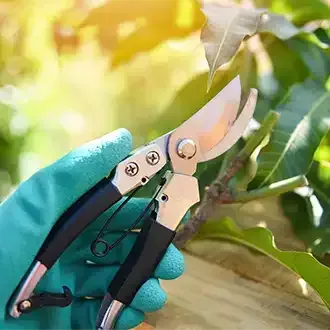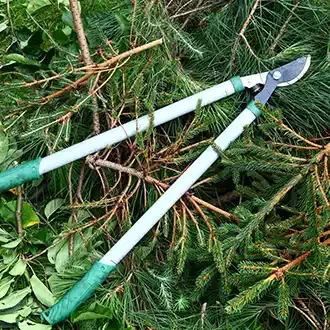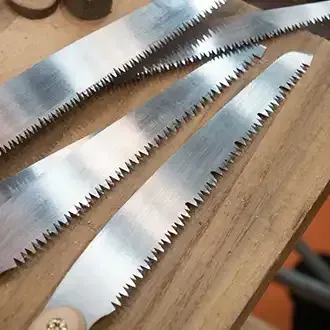Winter Gardening: In-Depth Guide to Pruning Plants
A Comprehensive Guide to Winter Plant Pruning
Winter is the slow season for most gardeners, but there are still things that you can do to keep your garden healthy for the future. Pruning plants is essential for healthy, thriving gardens, and winter is one of the best times to prune most species. By pruning during the colder months, you can encourage healthy growth in spring, improve plant resilience, and control plant size and shape.
This guide covers the benefits of winter pruning, essential tools, step-by-step instructions, and aftercare for a healthier garden this season.
Benefits of Pruning
Why You Should Prune in the Winter
Winter is an ideal time to prune many plants, especially deciduous trees and shrubs, as they enter dormancy during colder months. During dormancy, plants are less active, meaning they can recover more easily from the cuts made during pruning without as much stress. Additionally, with leaves out of the way, it's easier to see the plant’s structure and identify branches that need attention.
Why You Should Prune in the Winter
Winter pruning offers several health benefits that promote strong, resilient growth in plants:
- Removes Dead or Diseased Wood: By cutting away dead or diseased branches, you prevent the spread of infections and help the plant direct nutrients to its healthier parts, supporting overall vitality.
- Enhances Nutrient Distribution: With fewer and healthier branches to support, plants can focus energy on stronger growth, producing healthier leaves, flowers, or fruit when the growing season begins.
- Improves Airflow and Sunlight Penetration: Thinning out crowded branches allows more airflow through the plant and more sunlight to reach the plant’s inner branches. Better ventilation reduces moisture buildup, which can help prevent fungal diseases and rot. Plants exposed to sunlight are also less likely to develop damp, shaded spots that can harbor disease.
- Encourages New Growth: Winter pruning stimulates new growth in the spring, leading to fuller, more robust plants. This is particularly beneficial for flowering and fruiting plants, which produce better yields after proper pruning.
This careful maintenance sets your plants up for a stronger start in the spring, ensuring that they are well-ventilated, disease-resistant, and able to maximize growth potential.
When is the Best Time to Prune in the Winter, and How Often Should You Prune
For most plants, pruning once during the winter months is enough. However, if a plant has extensive dead or damaged branches, it might require a bit more attention. Generally, late winter (around January or February) is ideal, as it prepares the plant for spring growth without risking damage from early frosts.
Best Tools for Pruning
The right tools can make pruning easier and more effective. Keeping your tools sharp and clean will help ensure precision and reduce the risk of transmitting diseases between plants.
Bypass Pruners

For small branches, bypass pruners work well, allowing for clean cuts that heal quickly.
Loppers

For medium-sized branches, loppers provide additional reach and leverage.
Pruning Saw

For large branches, a pruning saw is the best choice, making smooth, even cuts.
What Plants Benefit the Most from Winter Pruning
In Texas, mild winter allows for a longer season. Here are a few common Texas plants that thrive with winter pruning:
- Crepe Myrtles: Pruning helps shape these trees, encouraging them to bloom more vibrantly in spring.
- Oak Trees: Winter pruning reduces the risk of oak wilt, a disease prevalent in Texas.
- Roses: Pruning roses encourages a bushier growth pattern, resulting in more blooms.
- Fruit Trees: Apple, peach, and pear trees benefit from winter pruning, which promotes larger, healthier fruits in the coming season.
Step-by-Step Pruning
How to Identify If Your Plant Needs Pruning
Identifying when a plant needs pruning is crucial to keeping it healthy, aesthetically pleasing, and safe from disease. Here’s how to recognize the telltale signs. Look for:
- Dead or Diseased Branches: Branches that have lost their color, appear brittle, or break easily. They may have spots, discoloration, or oozing areas.
- Crossed or Rubbing Branches: Branches that cross or rub create wounds on the bark, making the plant susceptible to disease.
- Excessive or Unruly Growth: Shoots that grow away from the plant’s main shape, like water sprouts or suckers that draw resources.
- Insect Damage: Look for small holes, wilting, or discoloration, which can indicate pest infestations. Removing damaged branches reduces the risk of pests spreading.
During the winter, these signs should be much easier to spot, as it’s easier to see the plant’s structure without leaves.
Prep Before Pruning
Before you start, disinfect your tools with a solution of 70% rubbing alcohol and water to avoid spreading diseases. Wear gloves to protect your hands, and have a plan for the shape you want your plant to take. For smaller plants, clear any leaves or debris around the base to improve visibility.
Pruning Technique
When pruning, make cuts at a 45-degree angle just above a node (the point where a branch or bud grows). This angle allows water to run off, reducing the chance of decay or disease. Remove damaged or diseased branches first, then focus on shaping and thinning.
Pruning Technique for Different Plants
While the general technique remains the same, there are slight differences to keep in mind between plants that will help you achieve your desired result.
- Trees: Start with the main branches, trimming dead or damaged wood. For trees like oaks, only prune branches smaller than 3 inches in diameter unless it’s absolutely necessary to remove larger ones.
- Shrubs: Trim shrubs to maintain their shape, removing any growth that doesn’t fit the form you want. Avoid taking off more than one-third of the plant in a single season.
- Roses: Cut back dead or damaged canes, then trim the rest of the plant to a manageable shape. Aim to leave four or five strong canes for optimal blooms.
- Fruit Trees: Thin out overcrowded branches to let more light reach the center. Focus on horizontal branches, as these tend to produce more fruit than vertical shoots.
Avoid These Common Pruning Mistakes
While pruning helps keep your plants healthy, these common mistakes can have the opposite effect on your garden:
- Over-pruning: Taking too much off can stunt the plant’s growth and make it vulnerable to disease.
- Pruning at the Wrong Time: Some plants, such as spring-blooming shrubs, should be pruned after they flower rather than in winter.
- Improper Cuts: Cutting too close to a bud or leaving too much of a stub can result in poor healing and even disease.
Aftercare and Maintenance
Once you've pruned your plants, dispose of any diseased branches properly to prevent contamination. Add a layer of mulch around the base of each plant, but keep it a few inches away from the trunk to prevent rot. Continue to monitor your pruned plants throughout the winter, especially if there are any late frosts, and check that new growth appears healthy in spring.
Conclusion
Winter pruning can improve plant health, aesthetics, and productivity, helping to set your garden up for a successful growing season. By following these tips and techniques, you’ll enjoy stronger, healthier plants and a more vibrant landscape come spring.
Rosehill Palms
18511 FM 2920 Rd, Tomball, TX 77377
Proud member of the
Please feel free to contact us via the form below. We will give you an answer as soon as possible!
Contact Form Blog
We will get back to you as soon as possible.
Please try again later.
Rosehill Palms | Developed by Urdaneta Group WSI | All Rights Reserved 2025
Rosehill Palms | Developed by WSI Houston | All Rights Reserved 2024





